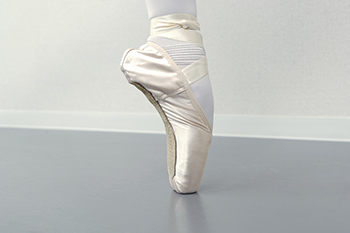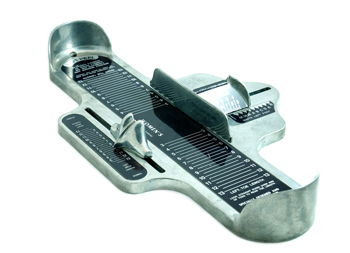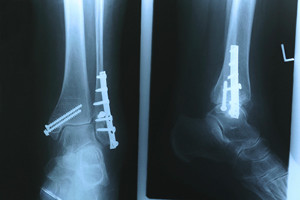Items filtered by date: June 2024
Do Your Child's Feet Hurt?
Taking Good Care of Children’s Feet
 Good foot health is important, particularly for children, as their feet are still developing and are foundational to their overall physical health. Children’s feet grow rapidly, and proper development is essential to prevent long-term issues. Poor foot health in childhood can lead to problems such as flat feet, misaligned bones, or even postural issues affecting the knees, hips, and spine. Ensuring good foot health involves several key practices. Children should wear properly fitted shoes that provide adequate support. Regularly checking shoe size is important as kids outgrow shoes quickly. Encourage children to walk barefoot when safe, as this can strengthen their foot muscles. Hygiene is equally important, as keeping feet clean and dry prevents fungal infections. Observing children’s walking patterns and foot structure can help identify issues early. For any concerns about your child's foot health, it is suggested that you visit a podiatrist for professional advice and treatment.
Good foot health is important, particularly for children, as their feet are still developing and are foundational to their overall physical health. Children’s feet grow rapidly, and proper development is essential to prevent long-term issues. Poor foot health in childhood can lead to problems such as flat feet, misaligned bones, or even postural issues affecting the knees, hips, and spine. Ensuring good foot health involves several key practices. Children should wear properly fitted shoes that provide adequate support. Regularly checking shoe size is important as kids outgrow shoes quickly. Encourage children to walk barefoot when safe, as this can strengthen their foot muscles. Hygiene is equally important, as keeping feet clean and dry prevents fungal infections. Observing children’s walking patterns and foot structure can help identify issues early. For any concerns about your child's foot health, it is suggested that you visit a podiatrist for professional advice and treatment.
Making sure that your children maintain good foot health is very important as they grow. If you have any questions, contact Edward Sharrer, DPM of Premier Foot and Ankle Clinic. Our podiatrist can provide the care you need to keep you pain-free and on your feet.
Keeping Children's Feet Healthy
Having healthy feet during childhood can help prevent medical problems later in life, namely in the back and legs. As children grow, their feet require different types of care. Here are some things to consider...
Although babies do not walk yet, it is still very important to take care of their feet.
Avoid putting tight shoes or socks on his or her feet.
Allow the baby to stretch and kick his or her feet to feel comfortable.
As a toddler, kids are now on the move and begin to develop differently. At this age, toddlers are getting a feel for walking, so don’t be alarmed if your toddler is unsteady or ‘walks funny’.
As your child gets older, it is important to teach them how to take care of their feet.
Show them proper hygiene to prevent infections such as fungus.
Be watchful for any pain or injury.
Have all injuries checked by a doctor as soon as possible.
Comfortable, protective shoes should always be worn, especially at play.
If you have any questions please feel free to contact our office located in North Little Rock, AZ . We offer the newest diagnostic and treatment technologies for all your foot and ankle needs.
Understanding the Biomechanics and Anatomy of a Dancer's Foot

In the intricate world of dance, understanding the biomechanics and anatomy of the foot is paramount. The foot is a complex structure comprising bones, muscles, tendons, and ligaments, all working together to support movement and balance. Dancers rely heavily on their feet to execute precise movements, requiring a deep understanding of foot mechanics. The arches of the foot act as shock absorbers, absorbing impact and providing stability during jumps and landings. Muscles in the foot and lower leg work in harmony to create intricate footwork and maintain proper alignment. Ligaments and tendons provide support and allow for fluid movement, while the toes play a vital role in balance and propulsion. By comprehending the biomechanics and anatomy of the foot, dancers can optimize their technique, prevent injuries, and enhance their performance on stage. It is essential for dancers to understand how their feet move for their desired style of dancing. If you have suffered a foot injury while dancing, it is suggested that you consult a podiatrist who can accurately diagnose and treat your foot condition.
If you have any concerns about your feet, contact Edward Sharrer, DPM from Premier Foot and Ankle Clinic. Our podiatrist can provide the care you need to keep you pain-free and on your feet.
Biomechanics in Podiatry
Podiatric biomechanics is a particular sector of specialty podiatry with licensed practitioners who are trained to diagnose and treat conditions affecting the foot, ankle and lower leg. Biomechanics deals with the forces that act against the body, causing an interference with the biological structures. It focuses on the movement of the ankle, the foot and the forces that interact with them.
A History of Biomechanics
- Biomechanics dates back to the BC era in Egypt where evidence of professional foot care has been recorded.
- In 1974, biomechanics gained a higher profile from the studies of Merton Root, who claimed that by changing or controlling the forces between the ankle and the foot, corrections or conditions could be implemented to gain strength and coordination in the area.
Modern technological improvements are based on past theories and therapeutic processes that provide a better understanding of podiatric concepts for biomechanics. Computers can provide accurate information about the forces and patterns of the feet and lower legs.
Understanding biomechanics of the feet can help improve and eliminate pain, stopping further stress to the foot.
If you have any questions please feel free to contact our office located in North Little Rock, AZ . We offer the newest diagnostic and treatment technologies for all your foot and ankle needs.
Shoe Fitting Tests for Older Adults Using a Brannock Device and 3D Foot Scanning

Ensuring accurate shoe fitting in older adults is essential for comfort and mobility. The Brannock device, a traditional tool used for decades, measures foot length and width manually. While it is reliable for basic measurements, it does not capture the full complexity of foot shape. In contrast, three-dimensional, or 3D, foot scanning technology offers a more comprehensive analysis. This advanced method creates a detailed digital model of the foot, accounting for variations in arch height, toe shape, and other nuances. Older adults, who often experience changes in foot structure due to aging, can benefit significantly from the precision of 3-D scanning. This technology provides tailored recommendations, enhancing both comfort and support. Although the Brannock device remains a valuable tool, the detailed insights from 3-D foot scanning represent a significant advancement in ensuring the best fit for older individuals. If you are wearing shoes that do not fit properly and have developed a foot condition, it is suggested that you visit a podiatrist who can help you with relief options and guide you on the best way to determine your shoe size.
It is important to find shoes that fit you properly in order to avoid a variety of different foot problems. For more information about treatment, contact Edward Sharrer, DPM from Premier Foot and Ankle Clinic. Our podiatrist will treat your foot and ankle needs.
Proper Shoe Fitting
Shoes have many different functions. They cushion our body weight, protect our feet, and allow us to safely play sports. You should always make sure that the shoes you wear fit you properly in order to avoid injuries and deformities such as: bunions, corns, calluses, hammertoes, plantar fasciitis, stress fractures, and more. It is important to note that although a certain pair of shoes might be a great fit for someone else, that doesn’t mean they will be a great fit for you. This is why you should always try on shoes before buying them to make sure they are worth the investment. Typically, shoes need to be replaced ever six months to one year of regular use.
Tips for Proper Shoe Fitting
- Select a shoe that is shaped like your foot
- Don’t buy shoes that fit too tight, expecting them to stretch to fit
- Make sure there is enough space (3/8” to ½”) for your longest toe at the end of each shoe when you are standing up
- Walk in the shoes to make sure they fit and feel right
- Don’t select shoes by the size marked inside the shoe, but by how the shoe fits your foot
The shoes you buy should always feel as good as they look. Shoes that fit properly will last longer, feel better, and improve your way of life each day.
If you have any questions, please feel free to contact our office located in North Little Rock, AZ . We offer the newest diagnostic and treatment technologies for all your foot care needs.
How an Ankle Fracture Can Disrupt Life
 A fractured ankle can significantly disrupt daily life, particularly impacting employment. This type of injury often requires an extended period of immobilization, followed by a lengthy rehabilitation process to restore full functionality. The inability to walk or stand for prolonged periods can make it challenging to perform job duties, especially in physically demanding roles. Consequently, high rates of unemployment and disability are observed among those with severe ankle fractures. The disruption stems from the need for rest and restricted movement to ensure proper healing, which can lead to extended absences from work. Additionally, the pain and swelling associated with a fractured ankle can hinder mobility and productivity. Without adequate treatment and rehabilitation, complications such as chronic pain, instability, and arthritis may develop, further delaying recovery and complicating return-to-work plans. If you have suffered an ankle fracture, it is strongly suggested that you receive a comprehensive treatment plan from a podiatrist to recover efficiently and return to work as quickly as possible.
A fractured ankle can significantly disrupt daily life, particularly impacting employment. This type of injury often requires an extended period of immobilization, followed by a lengthy rehabilitation process to restore full functionality. The inability to walk or stand for prolonged periods can make it challenging to perform job duties, especially in physically demanding roles. Consequently, high rates of unemployment and disability are observed among those with severe ankle fractures. The disruption stems from the need for rest and restricted movement to ensure proper healing, which can lead to extended absences from work. Additionally, the pain and swelling associated with a fractured ankle can hinder mobility and productivity. Without adequate treatment and rehabilitation, complications such as chronic pain, instability, and arthritis may develop, further delaying recovery and complicating return-to-work plans. If you have suffered an ankle fracture, it is strongly suggested that you receive a comprehensive treatment plan from a podiatrist to recover efficiently and return to work as quickly as possible.
Broken ankles need immediate treatment. If you are seeking treatment, contact Edward Sharrer, DPM from Premier Foot and Ankle Clinic. Our podiatrist can provide the care you need to keep you pain-free and on your feet.
Broken Ankles
A broken ankle is experienced when a person fractures their tibia or fibula in the lower leg and ankle area. Both of these bones are attached at the bottom of the leg and combine to form what we know to be our ankle.
When a physician is referring to a break of the ankle, he or she is usually referring to a break in the area where the tibia and fibula are joined to create our ankle joint. Ankles are more prone to fractures because the ankle is an area that suffers a lot of pressure and stress. There are some obvious signs when a person experiences a fractured ankle, and the following symptoms may be present.
Symptoms of a Fractured Ankle
- Excessive pain when the area is touched or when any pressure is placed on the ankle
- Swelling around the area
- Bruising of the area
- Area appears to be deformed
If you suspect an ankle fracture, it is recommended to seek treatment as soon as possible. The sooner you have your podiatrist diagnose the fracture, the quicker you’ll be on the way towards recovery.
If you have any questions, please feel free to contact our office located in North Little Rock, AZ . We offer the newest diagnostic and treatment technologies for all your foot care needs.




